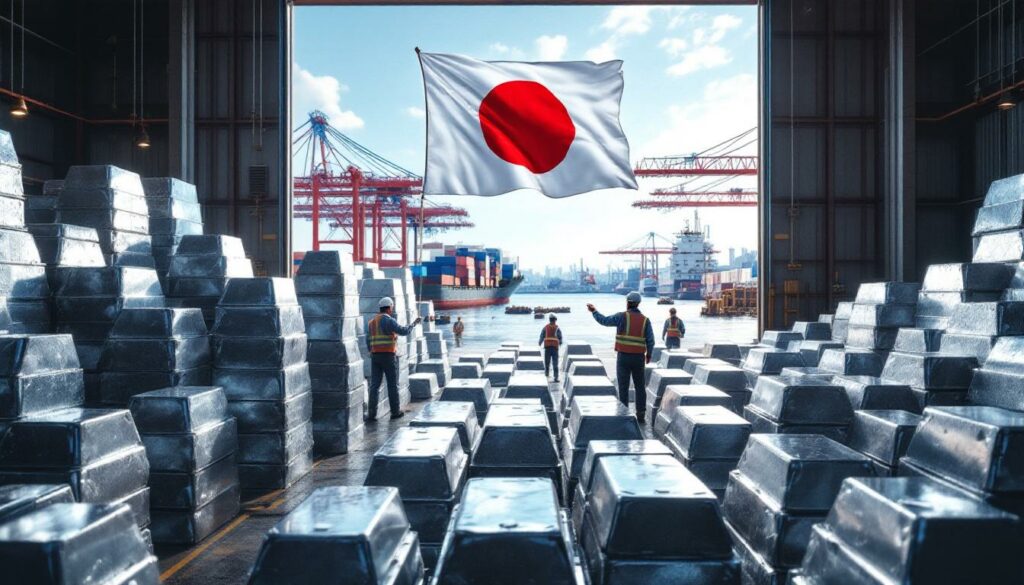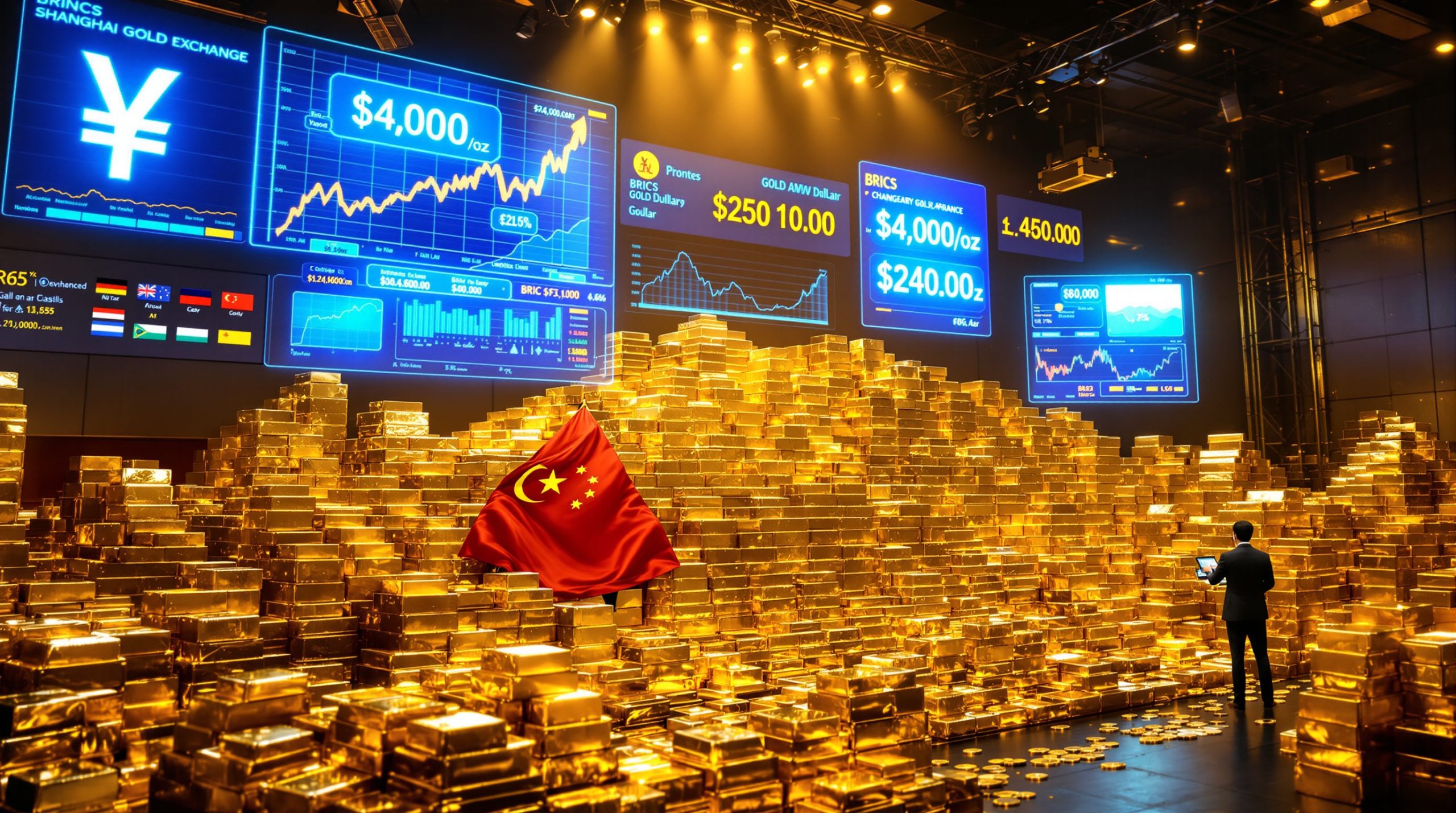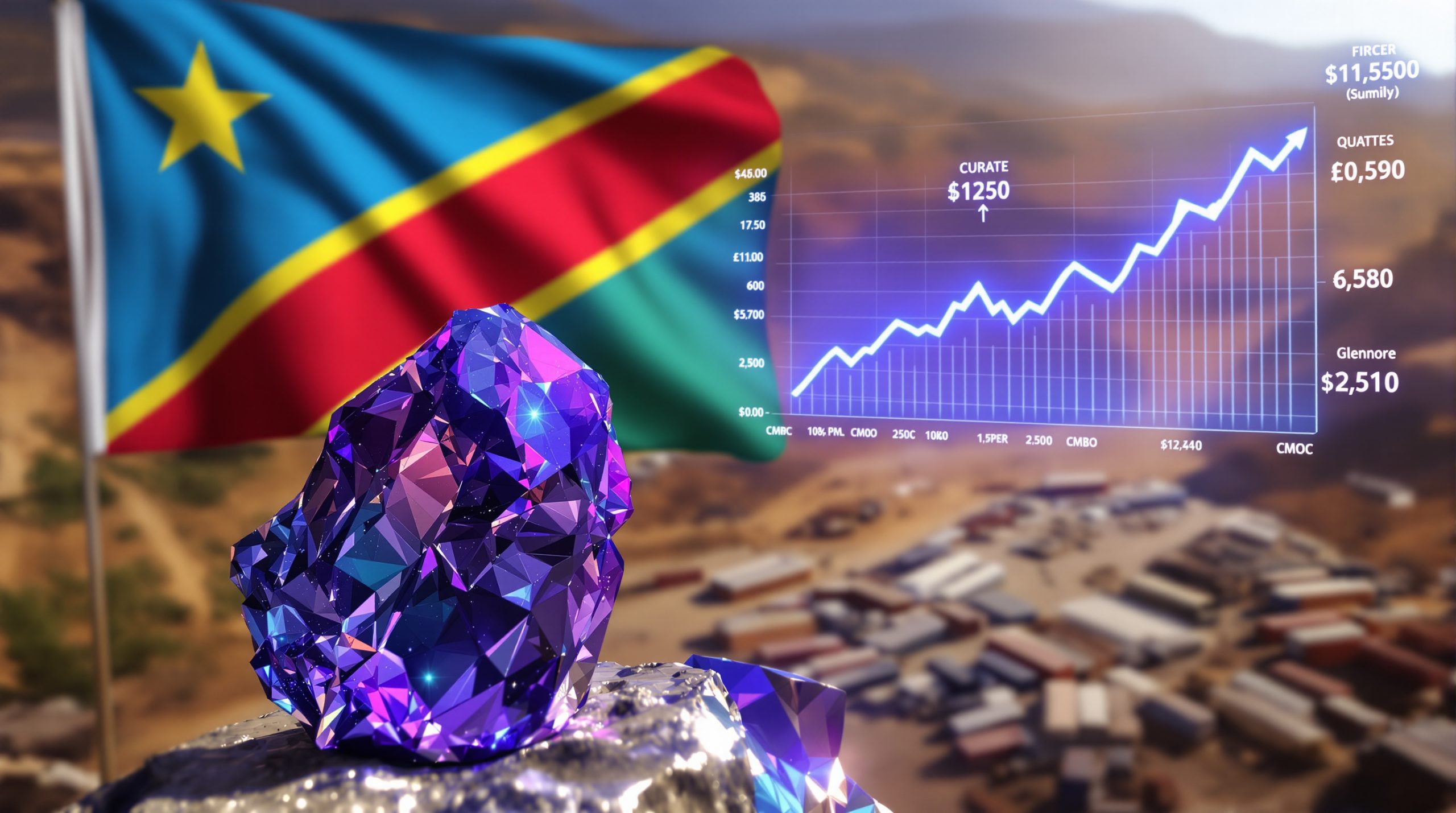What is Causing Japan's Aluminum Premium to Fall?
Japan's aluminum premium has plummeted to $108 per metric ton for Q3 2025, marking a dramatic 41% decline from the previous quarter's $182 per ton. This represents the second consecutive quarterly decrease and the lowest premium level since Q1 2024, creating significant ripples throughout the Asian aluminum market.
The premium collapse signals a fundamental shift in regional supply-demand dynamics, with Japanese buyers gaining substantial negotiating leverage against global producers. According to trading sources cited by MINING.com, the initial producer offers for Q3 2025 ranged between $122-$145 per ton, but the final settlement at $108 reflects buyers' strengthened position amid persistent market weakness.
"Domestic aluminum demand has been weak for about a year, even before the U.S. tariffs kicked in," noted a senior trading house executive who requested anonymity due to the commercial sensitivity of the negotiations.
This sustained period of demand weakness, coupled with swelling inventories at Japan's major ports, has created a perfect storm for premium compression that analysts believe may persist through year-end 2025.
How Do Aluminum Premiums Work in the Japanese Market?
Japan serves as the benchmark setter for aluminum pricing throughout Asia, with its quarterly premium negotiations closely watched by market participants across the region. As a major aluminum importer with limited domestic production, Japan's premium agreements effectively establish the reference price for physical metal transactions throughout East and Southeast Asia.
These premiums represent the amount paid above the London Metal Exchange (LME) cash price for physical delivery of primary aluminum. The premium reflects regional supply-demand balances, warehousing costs, logistics expenses, and other factors affecting physical metal availability.
The quarterly premium negotiation process follows a structured timeline:
- Talks typically begin in the final month of the preceding quarter
- Global producers (including Rio Tinto and South32) submit initial offers
- Japanese buyers (trading houses and end-users) counter with lower bids
- Multiple negotiation rounds continue until consensus emerges
- Settlement price becomes the benchmark for regional contracts
This system evolved over decades as Japan developed into Asia's most transparent aluminum market with sophisticated trading houses serving as intermediaries between global producers and domestic manufacturers. The premium's significance extends well beyond Japan's borders, influencing contract terms throughout South Korea, Taiwan, China and Southeast Asian markets.
The Premium Negotiation Process
Premium discussions involve careful analysis of multiple factors, with producers and consumers often reaching starkly different conclusions from the same market data. Key considerations include:
- Current and projected regional consumption patterns
- Inventory levels at major ports and bonded warehouses
- Production costs and capacity utilization rates
- Global trade flows and arbitrage opportunities
- Currency movements affecting relative import costs
- Energy prices impacting smelter economics
- Tariff policies and trade restrictions
For Q3 2025, Japanese buyers successfully leveraged mounting port inventories (which reached 331,000 tons by end-May, up 3.3% month-on-month according to Marubeni data) to secure significant premium reductions from initially proposed levels.
What Factors Are Driving the Premium Decline?
Persistent Weak Domestic Demand
The Japanese aluminum market has experienced sluggish demand for approximately 12 months, significantly predating recent U.S. tariff implementations. This prolonged consumption weakness reflects broader structural issues in Japan's manufacturing sector, including:
- Automotive production disruptions due to semiconductor shortages
- Construction sector contraction following pandemic-era stimulus expiration
- Packaging industry consolidation reducing aluminum sheet requirements
- Intensifying competition from lighter-weight composite materials
- Manufacturing relocation to lower-cost Asian production centers
With demand tepid across multiple sectors, suppliers have faced intensifying competition for limited business opportunities, creating downward pressure on premiums as producers prioritize maintaining market share over price discipline.
Rising Inventory Levels
The aluminum stock buildup at Japan's three major ports (Yokohama, Nagoya, and Osaka) provides concrete evidence of the supply-demand imbalance. Port inventories increased to 331,000 tons by the end of May 2025, representing a 3.3% rise from the previous month according to Marubeni data.
More concerning for producers is the trend line, with May marking the third consecutive month of inventory growth. This persistent accumulation signals that supply continues to outpace demand despite previous premium reductions, suggesting fundamental market weakness rather than temporary seasonal factors.
Global Market Influences
Multiple international factors have compounded Japan's domestic demand challenges:
- Soft overseas premiums in competing regions creating downward pressure
- Ample supply availability throughout Asia despite production curtailments
- Weakening demand signals from key consuming sectors globally
- Redirection of metal previously destined for U.S. markets following tariff implementation
- Chinese export competition intensifying in value-added aluminum products
- Rising freight costs squeezing arbitrage opportunities between regions
The combination of these factors has transformed Japan from a premium market that historically commanded pricing power to one where buyers now dictate terms to increasingly desperate producers.
How Are U.S. Tariffs Impacting the Aluminum Market?
Recent Tariff Implementations
The Trump administration doubled aluminum import tariffs impact investment markets to 50% beginning June 4, 2025, dramatically altering global trade flows for the metal used extensively across transport, packaging, and construction sectors. This policy, implemented under Section 232 national security provisions, aims to support domestic production in the U.S. aluminum industry.
The tariff landscape has grown increasingly complex, with:
- 50% duties on primary aluminum imports
- 25% tariffs on automotive imports (scheduled for July 9, 2025)
- Potential 24% "reciprocal" tariffs if negotiations fail
- Uncertain exemption status for traditional allies like Canada
This policy volatility has disrupted established supply chains and created significant market uncertainty that extends well beyond U.S. borders.
Market Response to Tariffs
U.S. physical market premiums initially spiked to a record 62.50 cents per pound on June 6, 2025, reflecting immediate concerns about domestic supply shortages. However, premiums subsequently retreated as:
- Buyers revealed substantial pre-tariff inventory accumulation
- Market speculation grew about potential exemptions for Canadian shipments
- Supply chains began reconfiguring to accommodate the new trade landscape
- Demand destruction concerns emerged from price-sensitive sectors
The Trump tariff implications have created regional arbitrage opportunities for traders while simultaneously complicating premium forecasting due to evolving government negotiations and potential retaliatory measures.
Japan's Exposure to U.S. Trade Policies
While Japan faces limited direct impact from aluminum tariffs due to minimal exports of primary metal to the U.S., concerns are mounting about significant downstream effects:
- Japanese automakers face potential U.S. market access constraints
- Aluminum-intensive export products may lose competitiveness
- Supply chain disruptions could affect just-in-time manufacturing systems
- Trade diversion may increase competition in alternative export markets
Japanese officials are actively negotiating with Washington to exempt the country's carmakers from the impending 25% auto tariff, with discussions approaching a critical deadline as the July 9, 2025 implementation date approaches.
What's the Outlook for Aluminum Premiums?
Short-Term Projections
Industry sources offer divergent views on premium trajectories for the remainder of 2025, reflecting significant uncertainty in the current market environment.
Some market participants, particularly on the producer side, anticipate a potential rebound in premiums for Q4 2025 as:
- Current inventories are expected to clear through normal consumption
- Supply could tighten in Asia if U.S. demand recovers post-tariff adjustment
- Production costs remain elevated in many regions, creating floor price pressure
- Chinese export restrictions may limit available supply for neighboring markets
"We expect inventories to clear and premiums to rebound in Q4," noted one producer representative, highlighting the cyclical nature of aluminum premiums.
However, trading houses and consumers remain skeptical of near-term recovery prospects, citing:
- Continued weak demand signals from key manufacturing sectors
- Persistent inventory overhang despite premium reductions
- Global economic growth concerns limiting consumption upside
- Smelter restarts in response to previous higher prices increasing available supply
This divergence in outlook underlies the contentious nature of the most recent premium negotiations, with buyers and sellers operating from fundamentally different market perspectives.
Regional Market Dynamics to Watch
Several critical factors will determine premium direction through year-end 2025:
- Continued evolution of U.S. trade policies under the Trump administration
- Potential proposed tariff breaks or modifications to tariff implementation
- Chinese aluminum production and export patterns responding to domestic demand
- Energy cost fluctuations affecting global smelter economics
- Automotive and construction sector demand trends in key consumption regions
- Inventory financing attractiveness under changing interest rate environments
Market participants should monitor port inventory statistics as the most reliable leading indicator of premium direction, with sustained inventory reductions necessary before any meaningful premium recovery becomes possible.
How Does This Premium Decline Affect Different Market Participants?
Impact on Producers
Global aluminum producers face compressed margins when premiums decline, creating cascading effects throughout their operations:
- Production curtailments become increasingly likely at higher-cost operations
- Capital investment decisions for capacity expansion face heightened scrutiny
- Strategic shifts in regional sales focus may redirect metal from Japan to alternative markets
- Cost reduction initiatives gain urgency as pricing power diminishes
- Merger and acquisition considerations intensify within the sector
For major producers like Rio Tinto and South32, the premium compression forces difficult decisions about production allocation and optimal market targeting. Smelters with higher energy costs become particularly vulnerable as the premium component of realized prices diminishes.
Implications for Consumers
For downstream aluminum users, the lower premium environment offers several strategic advantages:
- Improved input cost structures enhancing manufacturing competitiveness
- Opportunity to rebuild inventories at favorable prices
- Enhanced negotiating leverage with suppliers for term contracts
- Potential competitive advantages against rivals in higher-premium regions
- Ability to delay purchases in anticipation of further price declines
Japanese automakers, beverage can manufacturers, and construction firms stand to benefit most directly from the premium reduction, though the advantage may be partially offset by weakening domestic demand in their respective end markets.
Trading House Perspectives
Metal trading companies must navigate the changing premium landscape by implementing sophisticated strategies:
- Adjusting inventory management approaches to limit downside exposure
- Recalibrating regional arbitrage models to capture emerging opportunities
- Developing new risk management techniques for volatile premium environments
- Identifying emerging trade flow patterns as global markets adjust to tariffs
- Balancing physical positions against financial hedging instruments
The premium volatility creates both risks and opportunities for trading entities, rewarding those with superior market intelligence and operational flexibility while punishing rigid business models unable to adapt to rapidly changing conditions.
FAQ About Japan's Aluminum Premium Decline
What exactly is an aluminum premium?
The aluminum premium is the amount paid above the LME base price for physical delivery of aluminum. It represents the regional component of aluminum pricing, reflecting:
- Local supply-demand balances
- Warehousing and financing costs
- Transportation and logistics expenses
- Import duties and regulatory compliance costs
- Market accessibility and liquidity factors
While the LME price represents the global benchmark for aluminum as a commodity, the premium reflects the specific conditions affecting physical metal availability in a particular region.
Why are Japan's aluminum premiums important globally?
Japan's quarterly premium negotiations serve as a benchmark for pricing throughout Asia for several reasons:
- Japan is Asia's most transparent aluminum market with published price settlements
- Japanese trading houses provide reliable market information to international participants
- The country's significant import volumes create meaningful price discovery
- Japan's premium negotiations occur on a predictable quarterly schedule
- Historical precedent has established Japan's premiums as the regional reference point
Changes in Japanese premiums often signal broader market trends and influence contract terms for numerous buyers and sellers across Asia, making them closely watched indicators for the global aluminum industry.
How do aluminum premiums differ around the world?
Premiums vary significantly by region based on:
| Region | Premium Format | Key Drivers | Current Level (Q3 2025) |
|---|---|---|---|
| Japan | CIF Port | Import dependence, inventory levels | $108/ton |
| North America | Delivered Midwest | Tariffs, domestic production | 55-60¢/lb (~$1,200/ton) |
| Europe | Duty-paid Rotterdam | Energy costs, import flows | $250-270/ton |
| South Korea | CIF Port | Japan benchmark with discount | $90-100/ton |
These regional differences create arbitrage opportunities for traders and strategic sourcing decisions for global consumers with manufacturing facilities in multiple regions.
What industries in Japan are most affected by aluminum premium changes?
The automotive, packaging, construction, and electronics sectors represent major aluminum consumers in Japan, each experiencing distinct impacts from premium fluctuations:
-
Automotive: Vehicle manufacturers use aluminum for lightweight components, body panels, and structural elements. Premium volatility affects their competitiveness in export markets.
-
Packaging: Beverage can producers operate on thin margins where material costs represent a substantial portion of total expenses. Premium reductions can significantly improve profitability.
-
Construction: Building products incorporate aluminum for windows, doors, curtain walls, and structural components. Premium declines improve project economics for aluminum-intensive designs.
-
Electronics: Consumer electronics manufacturers use aluminum for casings, heat sinks, and components. Premium changes affect product design decisions and material selection.
These industries experience direct cost impacts from premium fluctuations, affecting their competitiveness and pricing strategies in both domestic and export markets.
How might the premium trend develop through the remainder of 2025?
Industry analysts are divided on the outlook, with some expecting continued weakness due to sluggish demand, while others anticipate a potential recovery if global inventories normalize and U.S.-China trade war effects stabilize regional trade flows.
Key factors that will determine the trajectory include:
- Port inventory movements (particularly Yokohama, Nagoya, and Osaka)
- Automotive production schedules following semiconductor supply normalization
- Construction activity levels as interest rate policies evolve
- U.S.-Japan trade negotiations outcomes before July tariff implementation
- Chinese export volumes responding to domestic market conditions
- Producer discipline in maintaining production curtailments
The premium direction will likely become clearer after the summer holiday period when consumption patterns provide more reliable signals about underlying demand strength.
Global Aluminum Market Context
Current Supply-Demand Balance
The global aluminum market is experiencing pronounced regional disparities in supply-demand dynamics:
| Region | Supply Condition | Demand Trend | Premium Direction |
|---|---|---|---|
| Japan/Asia | Ample | Weak | Declining |
| North America | Tight | Stable | Volatile (tariff impact) |
| Europe | Balanced | Sluggish | Gradually declining |
| China | Surplus | Moderating | Under pressure |
These regional differences have disrupted traditional trade flows, with metal increasingly redirected from tariff-affected markets to regions with lower trade barriers, contributing to the supply abundance in Asian markets.
Key Production Statistics
Global aluminum production continues to evolve with shifting economic conditions:
- China remains the dominant producer with approximately 60% of global output
- Energy costs and environmental policies increasingly influence production decisions
- Several major producers have announced production curtailments in high-cost regions
- New capacity additions are primarily focused in regions with low-cost energy access
- Production costs remain elevated despite premium decreases, creating margin pressure
The interaction between these production trends and regional demand patterns will determine premium trajectories for the remainder of 2025 and beyond. Furthermore, iron ore price trends in China could provide insights into broader industrial metal demand patterns as we move forward.
Market Insight: The Japan aluminum premium falls to $108 per tonne on sluggish demand reflects a broader pattern of regional divergence in metal markets, where trade policies and local economic conditions are creating distinct pricing environments across major consuming regions. This fragmentation challenges global producers who must navigate increasingly complex optimization decisions about where to direct limited production volumes.
For market participants, the premium volatility underscores the importance of sophisticated risk management approaches that address both outright price exposure and regional premium fluctuations. As premium components represent an increasing proportion of total aluminum costs in many markets, traditional hedging strategies focused solely on LME price risk have become insufficient to manage overall price exposure.
Want to Invest in the Next Major Mineral Discovery?
Discovery Alert's proprietary Discovery IQ model delivers instant notifications when significant ASX mineral discoveries are announced, helping investors capitalise on potentially transformative opportunities. Explore why major mineral discoveries can lead to substantial market returns by visiting Discovery Alert's dedicated discoveries page and gain your market-leading advantage today.




